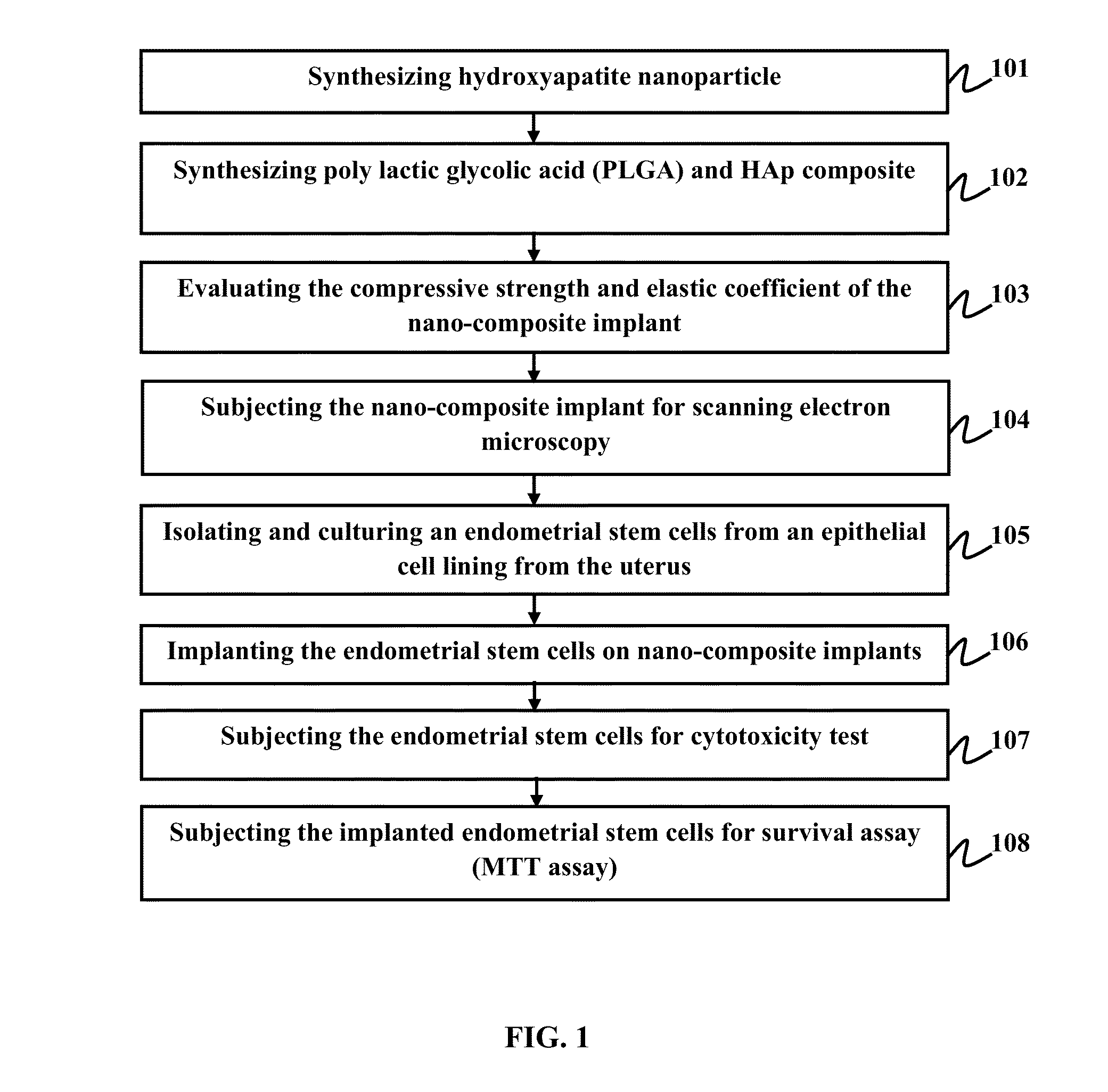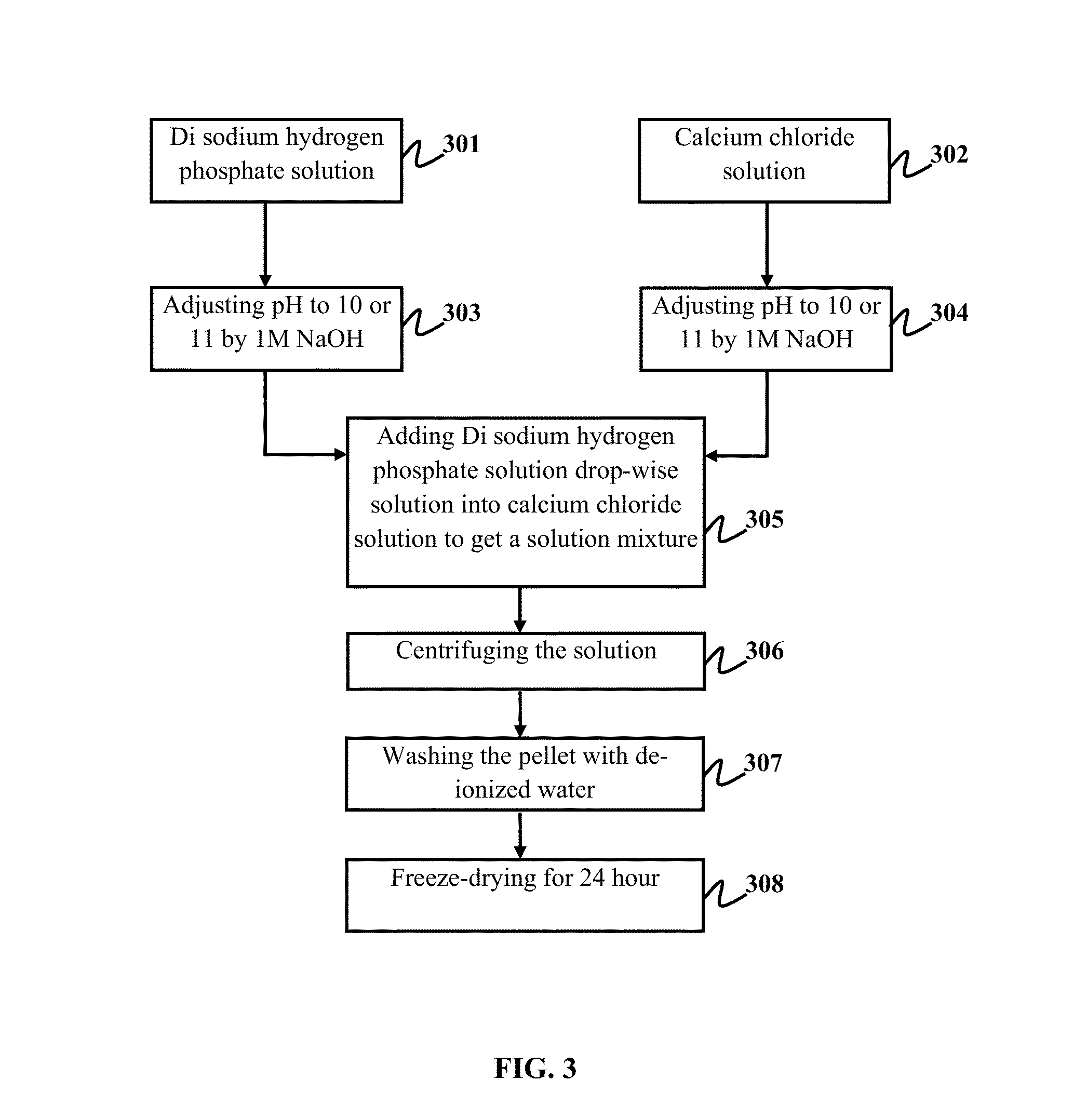Biodegradable and biocompatible NANO composite t-plate implant and a method of synthesizing the same
a biocompatible, nano-composite technology, applied in the direction of biocide, genital tract cells, enzymes, etc., can solve the problems of affecting the healing process of injured/broken tissue, affecting the healing effect of injured/broken tissue, and requiring surgery for more complicated fractures or multiple fractures. , to achieve the effect of accelerating the healing of injured/broken tissu
- Summary
- Abstract
- Description
- Claims
- Application Information
AI Technical Summary
Benefits of technology
Problems solved by technology
Method used
Image
Examples
example 1
Hydroxyapatite Nanaoparticles Synthesis
[0097]For the synthesis of nanocrystalline hydroxyapatite (HA) powder the solutions of 0.09M diammonium hydrogen phosphate solution [(NH4).2HPO4] and 0.15 M calcium nitrate 4-hydrogen solution [Ca(NO3)2.4H2O] were prepared and the pH of both the solutions were brought to 10-11 by adding 1M sodium hydroxide solution (NaOH) at room temperature. The phosphate solution was added drop-wise into calcium nitrate solution, resulting in the precipitation of hydroxyapatite. The ratio of calcium and phosphorus in the initial solution is chosen so that the molar ratio of calcium / phosphorus was 1.67. The precipitate was aged for 22 hours at room temperature on the magnetic stirrer (750 rpm). In the next step, the precipitated hydroxyapatite was centrifuged and then washed with de-ionized water. The solution was centrifuged at 300 rpm for 3 minutes and was transferred to freeze drying machine with a temperature range of approximately −40° C. to −50° C. The p...
example 2
Hydroxyapatite Nanoparticles Synthesis
[0110]For the synthesis of nanocrystalline hydroxyapatite (HA) powder the solutions of 0.15M calcium chloride (CaCl2) and 0.09 M disodium hydrogen phosphate solution [(Na2HPO4] were prepared and the pH of both the solutions were brought to 10-11 by adding 1M sodium hydroxide solution (NaOH) at room temperature. The phosphate solution was added drop-wise into calcium nitrate solution, resulting in the precipitation of hydroxyapatite. The ratio of calcium and phosphorus in the initial solution is chosen so that the molar ratio of calcium / phosphorus was 1.67. The precipitate was aged for 22 hours at room temperature on the magnetic stirrer rotated at 750 rpm. In the next step, the precipitated hydroxyapatite was centrifuged and then washed with de-ionized water. The solution was centrifuged at 300 rpm for 3 minutes and was transferred to freeze drying machine with a temperature range of approximately −40° C. to −50° C. The process of centrifuging a...
PUM
 Login to View More
Login to View More Abstract
Description
Claims
Application Information
 Login to View More
Login to View More - R&D
- Intellectual Property
- Life Sciences
- Materials
- Tech Scout
- Unparalleled Data Quality
- Higher Quality Content
- 60% Fewer Hallucinations
Browse by: Latest US Patents, China's latest patents, Technical Efficacy Thesaurus, Application Domain, Technology Topic, Popular Technical Reports.
© 2025 PatSnap. All rights reserved.Legal|Privacy policy|Modern Slavery Act Transparency Statement|Sitemap|About US| Contact US: help@patsnap.com



